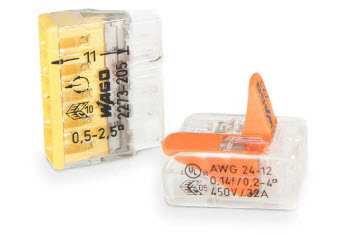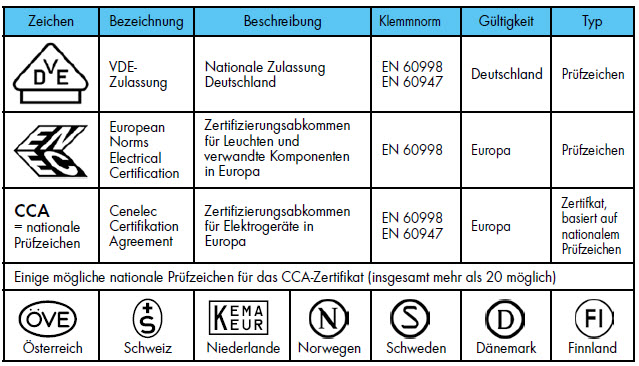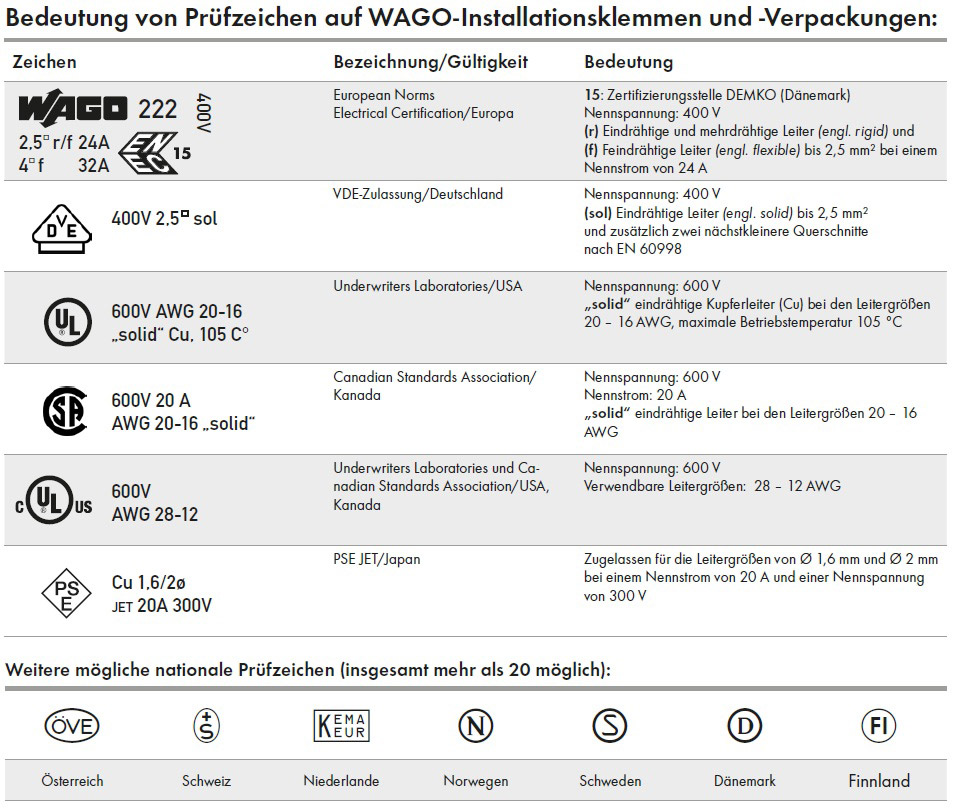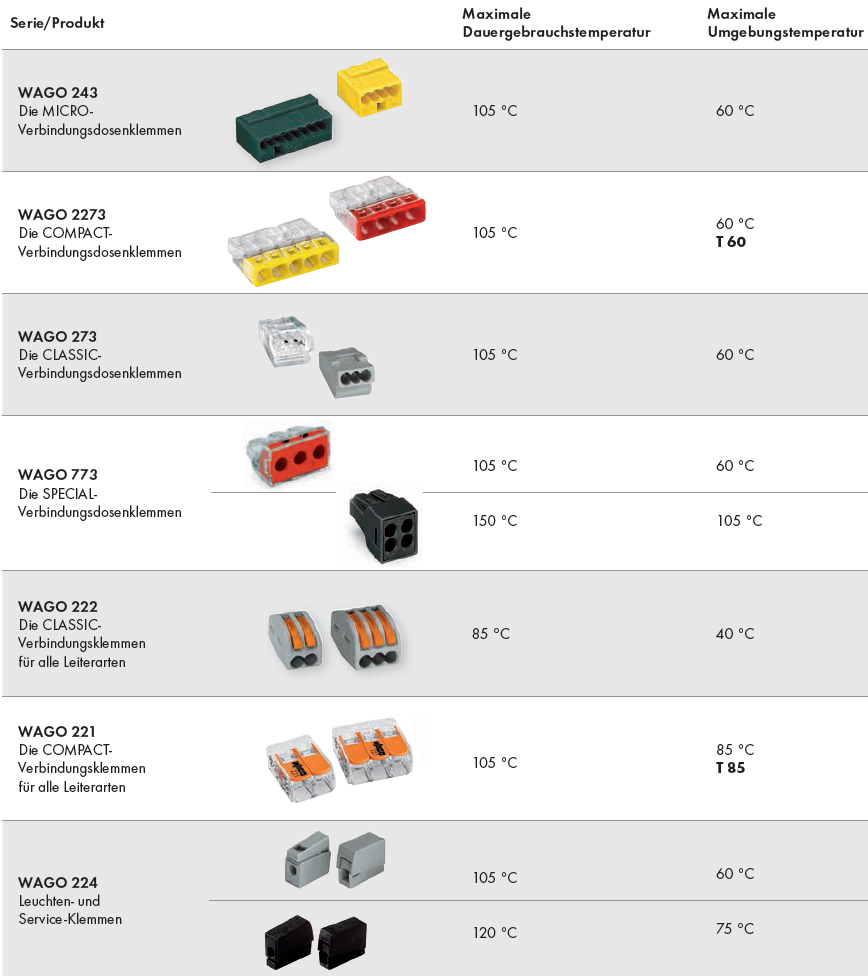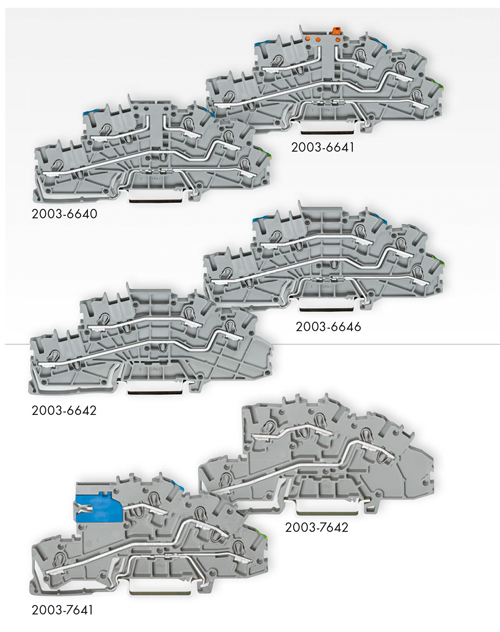Manufacturers can also specify different temperatures.
These are usually also continuous operating temperatures. The maximum permissible surrounding air temperature is obtained by subtracting the maximum heating level of 45 K from the specified temperature.
This is the option WAGO applies. Unless otherwise indicated, a maximum continuous operating temperature of 105 °C (221 °F) applies to all WAGO installation connectors. When the maximum heating level of 45 K is subtracted from the limit, a permissible surrounding air temperature of 60 °C (140 °F) still applies. This means that WAGO installation connectors are normally approved for higher temperatures and exceed the requirements set forth in the standards.
Approvals for higher surrounding air temperatures are possible
DIN EN 60998 also offers the option of approving connectors for higher surrounding air temperatures. This can be accomplished if the manufacturer modifies the connector’s design by using additional or higher-quality materials to minimize heating of the connectors. Connectors that are approved in standards for continuous operating temperatures greater than 85 °C (185 °F) are provided with a T mark in their certificate based on EN 60998, e.g., T55. This T mark consists of the letter “T” in front of a number, indicating the maximum surrounding air temperature for the connector.
Maximum Surrounding Air Temperature
- Maximum temperature of the surrounding air in which the connector can be used, in °C. The maximum surrounding air temperature also corresponds to the T mark specified by the standard (e.g., T85).
Maximum Heating:
- Greatest permissible temperature increase in Kelvin with the least favorable electrical load.
- This is produced by the current’s flow through the connector. Splicing connectors approved per EN 60998 are restricted to maximum heating of 45 K (corresponds to a temperature increase of 45 °C/113 °F). As a rule, connector manufacturers apply this maximum permissible heating value in the design of their connectors to ensure that the materials used for the conductive connector components remain affordable.
Maximum Continuous Operating Temperature:
- The maximum temperature in °C that the connector is allowed to reach during continuous operation.
- This temperature is the sum of the maximum permissible surrounding air temperature and the maximum permissible heating level.
Calculation of the permissible surrounding air temperature is not required for connectors with this marking. This temperature is indicated directly here as a number. Because its heating level is markedly lower than that permitted by the standard, the new 221 Series COMPACT Splicing Connector, for example, has a T marking of T85 for all conductor types. This indicates that the connector can be used at surrounding air temperatures of up to 85 °C (185 °F).
Some WAGO installation connectors have been developed for special applications. These connectors therefore frequently have specific maximum temperature ranges which usually far exceed the requirements of the standard. The table below lists the temperatures for WAGO’s installation connectors:
